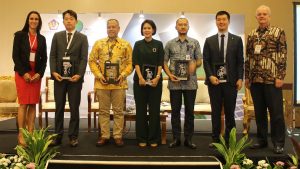Revive Traditional Indonesian Crafts in 2024
Indonesia’s traditional crafts have experienced renewed attention in 2024. This article describes efforts made to sustain them as cultural practices, highlights key artisans, and addresses their impact on both local communities and global markets.
Importance of Traditional Crafts
Traditional crafts play an integral role in Indonesia’s cultural heritage. Traditional arts reflect its varied cultural landscape, from batik and weaving to woodcarving and pottery making.
Crafts play an invaluable economic role. Artisans and small businesses involved with traditional crafts often rely on these activities for their livelihood, and Indonesia’s support of such practices helps maintain sustainable income sources in local economies.
Initiatives to Rejuvenate Crafts
A. Government Initiatives
Indonesia has implemented numerous initiatives to preserve traditional crafts. Programs designed to preserve craftsmanship include funding training workshops, exhibitions, and marketing support for artisans. Meanwhile, their “Cultural Heritage Preservation Program” works towards maintaining traditional techniques while making them known to wider audiences.
B. NGO Support
Non-governmental organizations also play a critical role. Organizations such as Dekranas in Indonesia play an integral part in promoting traditional crafts through various activities, including craft fairs, cultural events, and educational programs that showcase traditional works while helping artisans gain recognition in the marketplace and connect to markets.
3. Highlighting Artisans
Batik Artisans of Indonesia
Batik is one of Indonesia’s best-known traditional crafts. Artisans in Yogyakarta and Solo are well known for their intricate designs and techniques. These artisans uphold tradition with timeless patterns while also creating cutting-edge patterns tailored to contemporary tastes.
B. Weavers from Sumba
Sumba Island is famous for its traditional weaving techniques. Ikat textiles created using age-old methods are celebrated for their vibrant colors and complex patterns, which tell stories and have significant cultural meaning.
4. Impact on Local Communities
Revitalizing traditional crafts enables artisans to gain new opportunities and markets for their talents. Training programs and workshops help them develop skills while adapting to ever-evolving market requirements. This leads to improved financial security and greater self-worth for these artisans.
Crafts can play an invaluable role in building and strengthening communities. Local workshops and craft fairs foster social connections among artisans, while community-based craft projects often include collaborative efforts that increase social cohesion.
5. Market Trends globally
A. An Increased Demand for Handmade Products
There has been an ever-increasing global fascination with handmade and artisanal products. Consumers increasingly favor unique, ethically produced items that reflect cultural authenticity – something Indonesian traditional crafts are experiencing thanks to global markets that recognize them and support their revival.
B. E-Commerce Opportunities
E-commerce has provided new opportunities for traditional crafts. Online platforms enable artisans to reach a global customer base and showcase their wares; this digital outreach helps them compete more successfully in global markets while expanding their businesses.
6. Looking Ahead
As Indonesia continues revitalizing traditional crafts, attention will turn toward maintaining these efforts and meeting challenges head-on. By supporting artisans, promoting cultural heritage, and exploring market opportunities for traditional arts, Indonesia hopes to ensure their relevance and expansion over time.










Post Comment